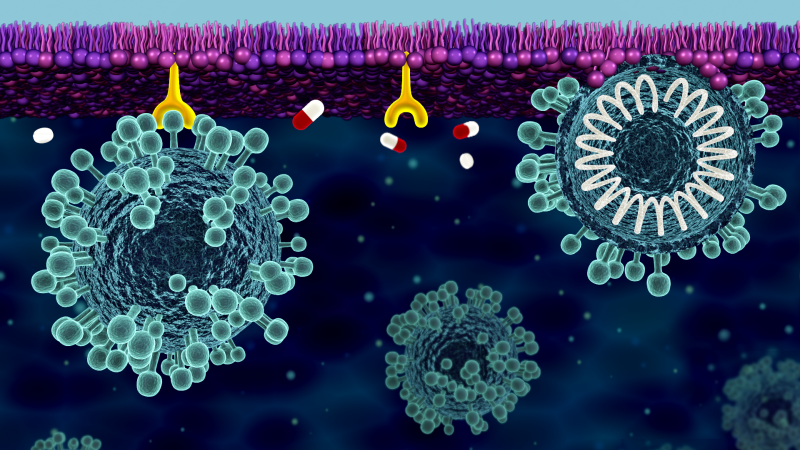November 20, 2020

The cell membrane is the cell’s outermost line of defense against SARS-CoV-2, the novel coronavirus responsible for COVID-19 disease.
Cell membranes are just a few nanometers thick but are essential for life. They serve as a barrier between the cell’s interior and its surrounding environment and host many activities necessary for cell function.
Researchers from Virginia Tech and the Department of Energy’s (DOE’s) Oak Ridge National Laboratory (ORNL) are using neutron scattering to investigate how the cell membrane and the virus impact each other and what therapeutic candidates could make cell membranes more resistant to viral entry. Such information could help experts design strategies for slowing down the progress of viral infection and reducing its harmful effects.
“Developing treatments that interfere with the viral infection process could help reduce the severity of the COVID-19 disease and enable people to recover more quickly,” said John Katsaras, a biophysicist and neutron scattering scientist at ORNL. This, in turn, could decrease the number of hospitalizations and reduce the risk of overwhelming medical facilities.
Membrane-focused mission
The coronavirus hijacks human cells with the help of spike proteins that protrude from its own membrane layer, giving the virus its crown-like appearance. The spike protein attaches to the cell surface and helps merge the viral and cellular membranes. Once the membranes are fused, the virus can enter the cell and create copies of itself, spreading the infection throughout the body.
By determining how the coronavirus penetrates the cell membrane, scientists can develop treatments that hinder this process. Many researchers are exploring ways to combat the virus by targeting its spike proteins, but fewer are paying attention to the site where the infection process begins: the cell membrane.
Read more at neutrons.ornl.gov.